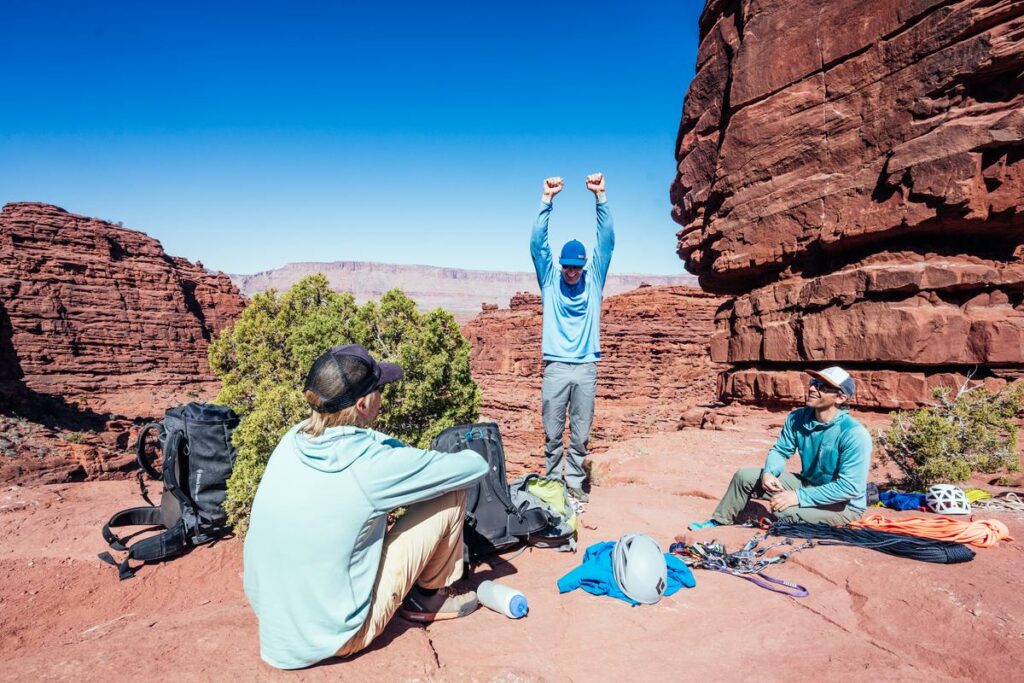$398B reasons for double Black Manhattans
Photo by James Q Martin
“The correct response to the passage of the biggest climate bill in US history is to go out and party. Make yourself a double Black Manhattan. Hit the dance floor. And then, yeah, wake up the next day and keep working. But savor the win, people.”
–Auden Schendler, POW Board Emeritus
Personally, I can’t handle a double Black Manhattan these days, but damn this feels good. After eighteen months of efforts by hundreds of thousands of us in the Outdoor State and beyond, the Inflation Reduction Act signed into law last week is proof that it is still possible to get legislation passed that bets $396 billion on the best that America stands for: innovation, domestic manufacturing, energy independence, public-private sector collaboration, workforce development and social investment. Oh, wait! There’s more: international credibility, a leadership position in the 21st-century energy economy and an incentivized, solutions-based approach to that nagging global warming problem.
As a POW member, you’ve probably read our take on the bill or maybe listened to the recent podcast I did on its history, significance, criticisms and next steps. I won’t repeat that here. I will, however, drill down on some of the specifics of what is included in the bill and why it warrants Auden’s double Manhattans. Hopefully, this will help get you fired up AND give you some talking points to impress whoever you’re hitting the dance floor with. So, here’s some (not all) of what I am stoked about that is in the bill:

Incentives and bonus tax credits tied to American manufacturing, investment in low-income communities, prevailing wages and apprenticeships are prevalent throughout the bill:
- American Manufacturing: Projects that begin construction before 2025 are eligible for bonus incentives if they have at least 40% American-made or sourced components. That percentage climbs to 55% after 2026 (slightly lower for offshore wind projects).
- Social investing
- Bonus (10-20%) tax incentives for projects located in low-income communities, low-income residential building projects and/or (depending on the project) those that serve low-income communities.
- Bonus credit for projects that pay prevailing wages and for which 10% of work hours in 2022 (scaling to 15% by 2024) are carried out by qualified apprentices.
- $35+ billion for nonprofit, state and local groups supporting zero and low emission technologies with 40% earmarked for low-income communities.
- Clean Energy Tax Credits
- Investment and Production Tax Credits (ITC and PTC, respectively) are extended through 2024 and eligible for an additional 10% credit if in service of a low-income community.
- Tax incentives also now extend to landfill gas, qualified hydropower, tidal power generation, geothermal and for the first time, hydrogen generation and nuclear power.
- There are also PTC and ITC incentives for carbon capture (meh) and technology-neutral clean electricity projects.
- Transmission: Another $2 billion for high-capacity transmission lines and $1 billion for modeling, siting and deployment of transmission lines and grid upgrade hardware. (BFD and one of POW’s top priorities. This is in addition to what is already in the Bipartisan Infrastructure Bill)
- Electrified transportation
- Tax credits for light EVs and for the first time used EVs. Eighty percent domestic manufacturing and sourcing of key minerals by 2027 are requirements for the full credit. (This is a bit more complicated, but that’s the gist of it)
- $3 billion to the Advanced Technology Vehicles Manufacturing program (think trains, boats, airplanes and hyperloop research vehicles)
- Up to $100,000 tax credit per charging station on a single property.
- In all likelihood the more immediate benefits of these credits will be investment in American plants (which we are already seeing in Kentucky for example), then in the transition of delivery fleets (the trucks filled with boxes that have your gear in them), then by those of us looking for a used Leaf or Tesla, and then, lastly by those looking to purchase a Rivian or F-150 lighting).
- $60 million in direct funding to the EPA to reduce emissions from the facilities that move our goods and their vehicles and $3 billion for my beloved USPS to procure EVs and charging stations.
- About $10 billion in building efficiency and electrification
- $5 billion in funding for proof of concept projects
- Rural community investment: $13 billion for rural development of renewable energy technologies and loans for generation and storage with support for rural electric coops to purchase renewable energy, including funds to terminate nonrenewable assets.
- $40 billion in loans through the Department of energy Loan Program Office.
AND a bunch of other stuff that we don’t have the space to cover but is good, really GOOD. (If you want a more detailed breakdown, check out this fantastic overview of the IRA by the crew at Advanced Energy Economy, which was my source for this letter).

There’s stuff in here that everyone can get behind: tax credits if you’re conservative, research investment if you’re a futurist, social spending if you lean more liberal and strong incentives for workforce development and American manufacturing, which should appeal to all of us. It’s important to remember that this isn’t all spending and that the Congressional Budget Office, which is non-partisan, has estimated that the bill will result in a net decrease in the deficit of $102 billion over the 2022-2031 period and that it will leverage trillions of dollars of private investment. A lot of this capital will be deployed in so-called ‘red states’ because that is where much of the country’s solar and wind capacity is and through which transmission lines must run. So regardless of ideology, this is a pragmatic win-win for all of us and a monumental step forward worth celebrating.
Once the celebration winds down, however, we must remember that these numbers mean little unless they translate into “clean electrons” moving through our grid. That is the next objective and it will be achieved at the state and local levels, where our voices and votes will have to get behind state initiatives and project approvals that may sometimes depend on institutions as local as your county commission.
So once the party winds down, you’ve slept it off and your climbing/riding/running/skiing partner asks “what’s next?” the answer is still the same: Show up. Speak Out. And VOTE! … but for now, here’s one for the OUTDOOR STATE.
Belong to the Solution,
Mario Molina
Executive Director

Author: Mario Molina
An avid alpinist, snowboarder, mountain biker, guide, and life adventurer, Molina previously served as international director at The Climate Reality Project, where he designed the organization’s climate leadership trainings and oversaw its post-Paris Agreement international strategy. Prior to his work at Climate Reality, Molina led strategy and programs as deputy director at the Alliance for […]
